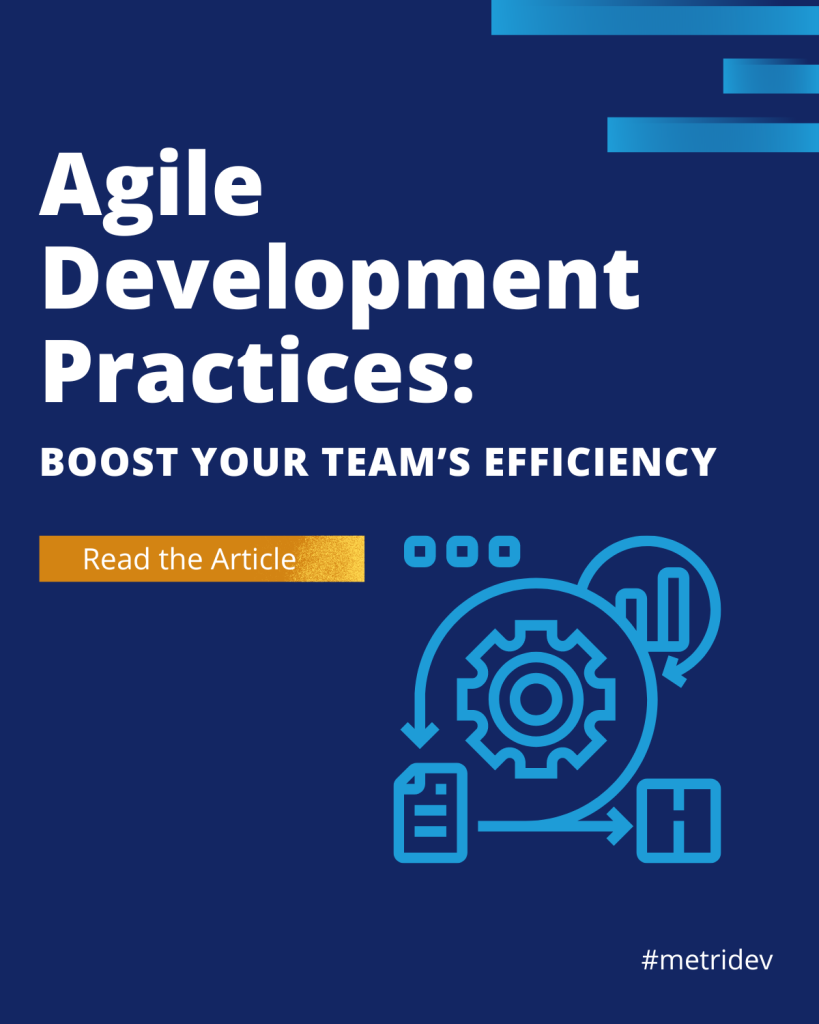Introduction
Effective project management is essential for successful software development. GitHub’s suite of tools provides valuable metrics to help teams optimize their workflow. This article will explore the importance of GitHub pull request metrics and how they can be leveraged to enhance development efficiency.
Does GitHub have metrics?
GitHub offers a wide range of metrics and analytics to help teams track the progress and performance of their projects. It provides a wealth of data, from the number of open issues to the average time it takes to merge a pull request, which teams can use to identify areas for improvement and make informed decisions.
Why are GitHub pull request metrics important?
Pull requests are a fundamental part of the GitHub workflow. Therefore, the metrics associated with them can provide valuable insights into the health and productivity of a development team. By tracking and analyzing these metrics, teams can identify bottlenecks and optimize their review processes. Moreover they can ensure that code changes are being integrated efficiently.
How to get pull request stats from GitHub?
GitHub provides several ways to access pull request metrics, including the web-based user interface, the GitHub API, and various third-party tools and integrations. Developers can use the GitHub API to retrieve detailed information about pull requests, such as the number of comments, the time it took to merge, and the number of commits.
Key GitHub pull request metrics to track
Some of the key GitHub pull request metrics that teams should consider tracking include:
Firstly, the Number of open pull requests. This metric can help teams identify areas where the review process may be slowing down. Additionally, tracking the Time to merge, or the average time it takes to merge a pull request. This one can help teams identify areas for improvement in their review process. Moreover, the Number of comments per pull request is noteworthy. A high number of comments may indicate that the code changes are complex or that there are communication issues within the team. Similarly, the Number of commits per pull request is significant. A high number of commits may suggest that the pull request is too large or that the developer is struggling to implement the changes effectively. Lastly, the Number of approvals per pull request is crucial. This metric can help teams ensure that code changes are being reviewed and approved by the appropriate stakeholders.

How to measure GitHub pull request metrics
There are several ways to measure GitHub pull request metrics, including:
- Manual tracking: Teams can manually track pull request metrics by reviewing the information provided in the GitHub user interface.
- Automated tracking: Teams can use various tools and integrations, such as GitHub Actions or third-party analytics platforms. This is to automatically track and report on pull request metrics.
- Custom reporting: Teams can use the GitHub API to build custom reporting solutions that provide more detailed and tailored insights into their pull request metrics.
How do I visualize actions in GitHub?
GitHub provides several ways to visualize actions, including the built-in commit graph and the GitHub Actions dashboard. Teams can also use third-party tools and integrations to create more advanced visualizations, such as burndown charts or cumulative flow diagrams.
Interpreting GitHub pull request metrics for optimal development efficiency
By analyzing the key GitHub pull request metrics, teams can gain valuable insights into their development workflow and identify areas for improvement. For example, a high number of open pull requests may indicate that the review process is too slow. On the other hand, a high number of comments per pull request may suggest that the team needs to improve their communication and collaboration.
Best practices for improving GitHub pull request metrics
To enhance their GitHub pull request metrics, teams can adopt the following best practices. Firstly, it’s crucial to Establish clear code review guidelines. By developing and communicating transparent guidelines for the code review process, teams can ensure consistency and efficiency in their reviews. These include expectations around response times, feedback quality, and approval criteria, . Additionally, Automating code quality checks is essential. Implementing automated tools and integrations to check for code quality, security vulnerabilities, and other potential issues before merging a pull request can significantly improve the overall quality and stability of the codebase.
Furthermore, Encouraging regular code reviews is paramount. Ensuring that all code changes undergo review by at least one other team member before being merged helps maintain code integrity and fosters collaboration within the team. Finally, fostering a culture of continuous improvement is key. Regularly reviewing the team’s GitHub pull request metrics and identifying areas for improvement. Furthermore, implementing changes while tracking the results ensures ongoing optimization of the development process.
Tools and plugins for tracking GitHub pull request metrics
There are a variety of tools and plugins available to help teams track and analyze their GitHub pull request metrics, including:
- GitHub Analytics: GitHub’s built-in analytics platform, which provides detailed insights into a repository’s activity and performance.
- Zenhub: A project management tool that integrates with GitHub and provides advanced reporting and analytics capabilities.
- Waffle.io: A project management tool that visualizes a team’s GitHub issues and pull requests in a Kanban-style board.
- Mergify: An automation tool that can help streamline the pull request review and merging process.
If you’re looking to optimize your development efficiency and take your GitHub workflow to the next level, be sure to explore the wide range of tools and integrations available. From automated code quality checks to advanced reporting and analytics, there are many ways to leverage GitHub’s powerful metrics and analytics capabilities.
What are the metrics for GitHub action?
GitHub Actions is a powerful tool for automating various aspects of the software development lifecycle, and it also provides a range of metrics to help teams track the performance and usage of their workflows. Some of the key GitHub Actions metrics to consider include:
- Workflow runs: The number of times a workflow has been executed.
- Workflow duration: The average time it takes for a workflow to complete.
- Workflow failures: The number of times a workflow has failed to complete successfully.
- Job runs: The number of individual jobs that have been executed as part of a workflow.
- Job duration: The average time it takes for a job to complete.
By tracking and analyzing these metrics, teams can identify areas for improvement in their GitHub Actions workflows, optimize their CI/CD processes, and ensure that their automated tasks are running efficiently.
GitHub pull request metrics for remote teams
In the era of distributed and remote work, GitHub’s pull request metrics become even more crucial. This is for maintaining development efficiency and collaboration. Transitioning to remote work brings unique challenges. However, these metrics can serve as valuable tools for remote teams to navigate them effectively. Firstly, remote teams can utilize these metrics to Identify communication bottlenecks, fostering smoother collaboration despite physical distance. Moreover, these metrics are instrumental in Ensuring timely code reviews. They help remote teams stay on top of their work and ensuring smooth development progress.
Additionally, GitHub’s metrics can Promote accountability within remote teams, fostering a culture of accountability and ownership. Furthermore, GitHub’s pull request metrics enable remote teams to Optimize workflow effectively. This way they ensure that remote teams remain agile and responsive, adapting to changing needs and optimizing their workflow for maximum efficiency.
How do I track an issue on GitHub?
Tracking issues on GitHub is an essential part of the development process, and the platform provides several tools and features to help teams manage and monitor their issues. Some of the key ways to track issues on GitHub include:
- GitHub Issues. The built-in issue tracking system, which allows teams to create, assign, and prioritize issues, as well as track their progress.
- GitHub Project Boards. A Kanban-style project management tool that can be used to visualize and track the status of issues and other work items.
- GitHub Milestones. A feature that allows teams to group related issues and track their progress towards a specific goal or release.
- GitHub Labels. A way to categorize and filter issues based on various criteria, such as priority, type, or status.
- GitHub Notifications. Email and in-app notifications that alert team members when an issue is created, updated, or assigned to them.
By leveraging these tools and features, teams can effectively track and manage their GitHub issues, ensuring that important work items are not overlooked and that the development process remains on track.
Conclusion: Harnessing the power of GitHub pull request metrics for optimal development efficiency
In conclusion, GitHub’s suite of metrics and analytics provides a powerful set of tools for teams. As a result, they can optimize their development workflow and enhance their overall efficiency. By tracking and analyzing key pull request metrics, such as the time to merge, the number of comments, and the number of approvals, teams can identify areas for improvement, streamline their review processes, and ensure that code changes are being integrated seamlessly.
Moreover, GitHub’s metrics can be particularly valuable for remote teams. In fact, these metrics can help them to maintain communication, collaboration, and accountability even in a distributed work environment. By harnessing the power of these metrics, teams can unlock new levels of productivity and deliver higher-quality software more efficiently.
Whether you’re a seasoned GitHub user or just starting to explore the platform’s capabilities, understanding and leveraging the power of GitHub pull request metrics is a critical step towards achieving optimal development efficiency. By implementing best practices, utilizing the right tools and integrations, and fostering a culture of continuous improvement, teams can unlock the full potential of their GitHub workflow.
Thank you for reading, you can also read our article Good Code Review Practices: Boosting Quality Assurance and drive your projects to greater success.









Leave a Reply